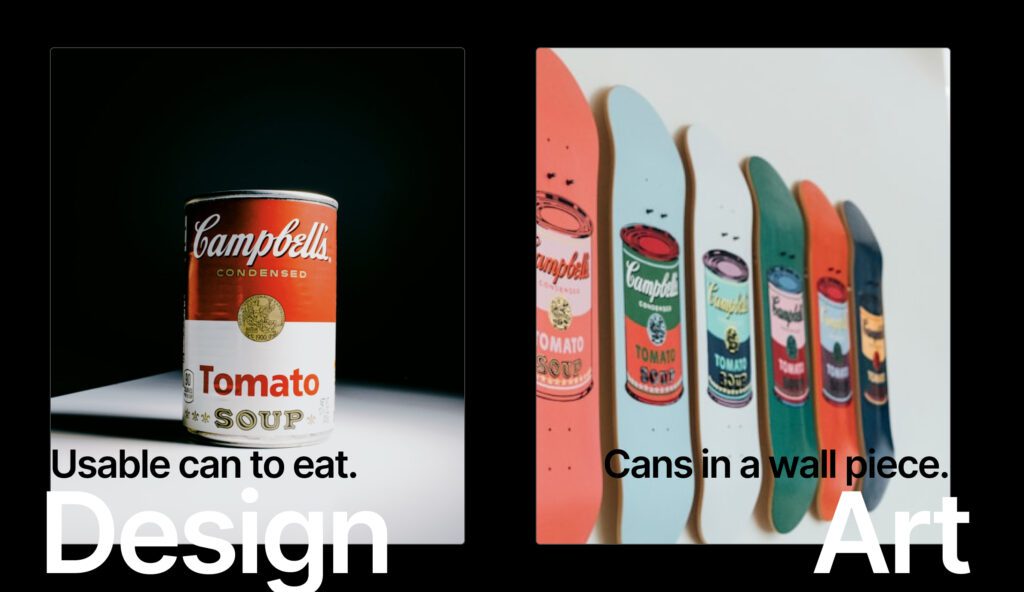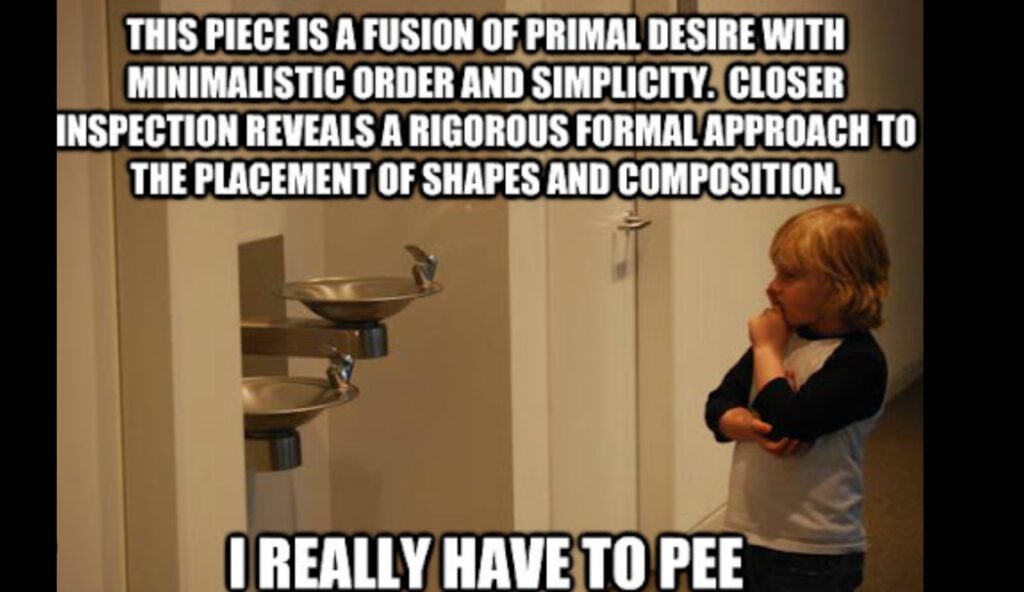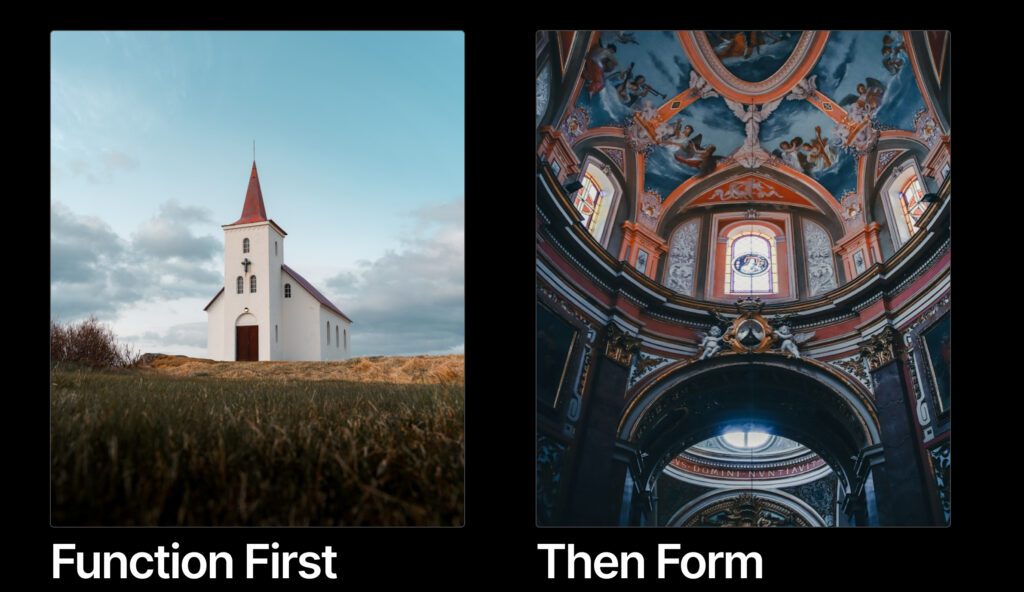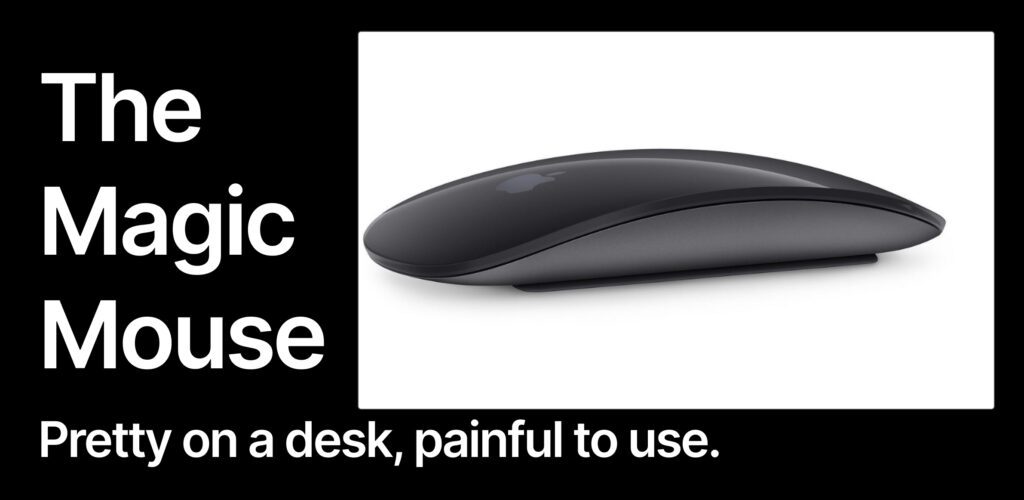Great design considers beauty, but not at the cost of utility.
Design may influence art, and art influence design, but they are not the same. Sameness removes the ability of mutual influence.
We buy things because they function, and get the luxury of form as a choice afterward. Culture and art may influence how a functional design may appear, but it does not create its function.
Great design considers beauty, but not at the cost of utility.

The core component of art is expression without any constraint. Its purpose is usually made for interpretation. Valuing the open ended questions over the answers.
That’s what makes art so fantastic. It is thought provoking and often leaves us to reflect on the questions it’s asking us. Each question is unique to the perceiver and their circumstance.
Whereas design is solutions-based, focused on making things for use. Answering the unanswered questions before they are asked to create the optimal user experience.
In context within each other, design creates the optimal pathway to walk, the right door to open and the best room where the art exists within an exhibit. It does not create the art itself. It gives room for the art to speak, and allows it to fulfill its function.

Throughout history, art has been shaped by wealth and class. The fine art world has long favored those with elite access — patrons, galleries, and institutions that elevate certain expressions over others.
As a result, art has become associated with cultural prestige, while design is often viewed as commercial or utilitarian.
This class-based hierarchy leads to a frequent conflation of the two. When design is elevated to “art,” it’s often because someone with influence has reframed it for cultural capital — not because it lost its function. The irony is that true design solves problems and serves users; treating it as art can strip it of that purpose.
This conflation trickles down into trends and influence to everyday people, and misinterpretations as to what design’s goal is becomes widespread.

Defining their separateness helps you know how to position them, and understand the role that art plays within design.
In any design process we start with understanding the core problem a business, product or service has and analyzing solutions based on research. We then test those solutions to land on solid prototypes. Taking that framework, creating it and applying form to it.
Artistic approaches come last. That is not to say art is irrelevant within a design process, it is to say design’s goal is functionality based on constraints and goals. Whereas the artistic expression of a product, good or service is often defined by its cultural position, which is why it’s added last.
The artistic evolution of marketing and ads are a great way to look at it. At its core it starts with solving the business owners problem, then adding flair to make it attractive to the right audience.
But what happens when we conflate the two and reorder them? Often resulting in things that are beautiful to look at, but are surface deep.

Consider the pretty photographers website where you cannot find where the booking button is. The ad that looks beautiful, but you cannot for the life of you figure out what they sell.
When we conflate the two, we often confuse their order within a design process. Losing our functionality and ultimately making something that does not serve its core goal of usability.
It is important to understand the difference so that we make products, services and goods that are for the everyday person and work for them consistently.